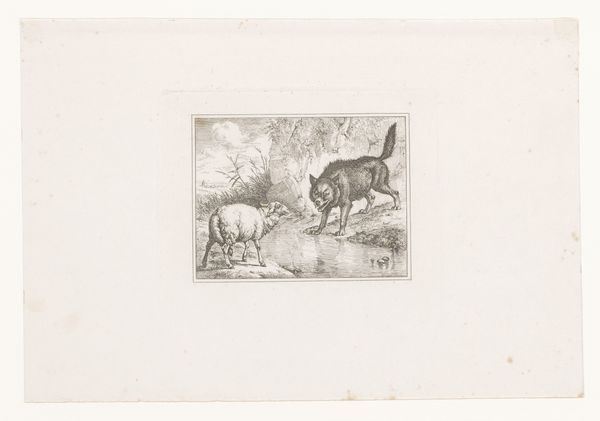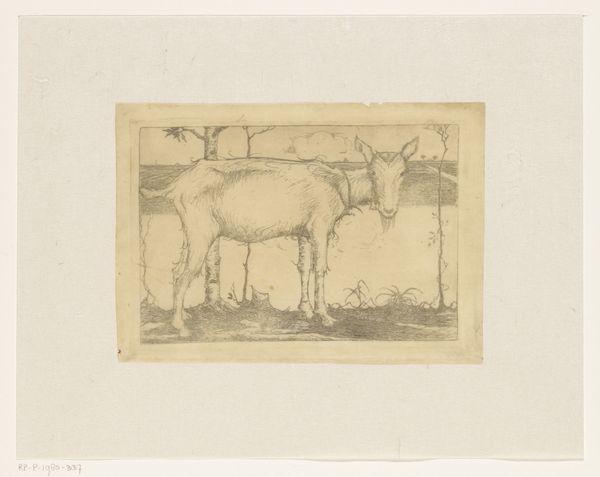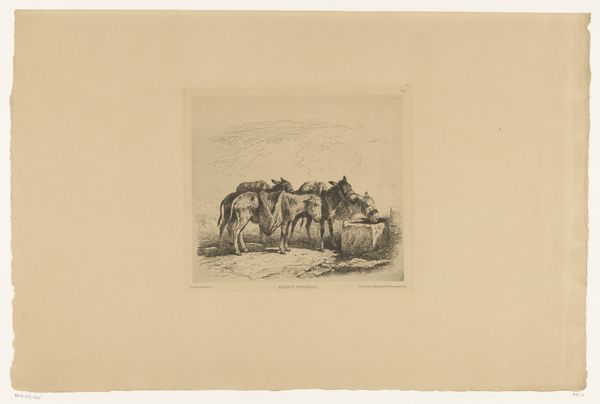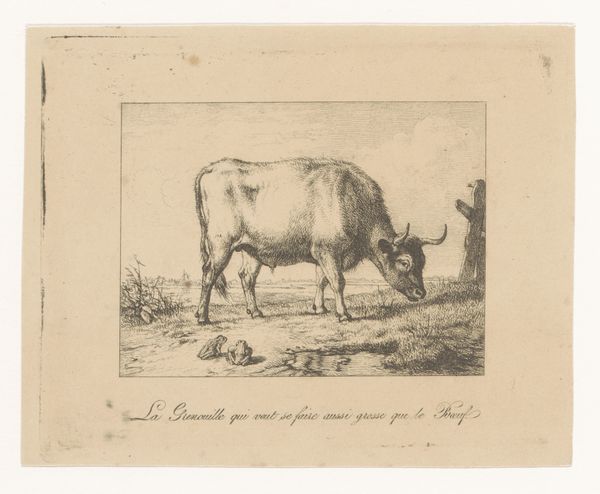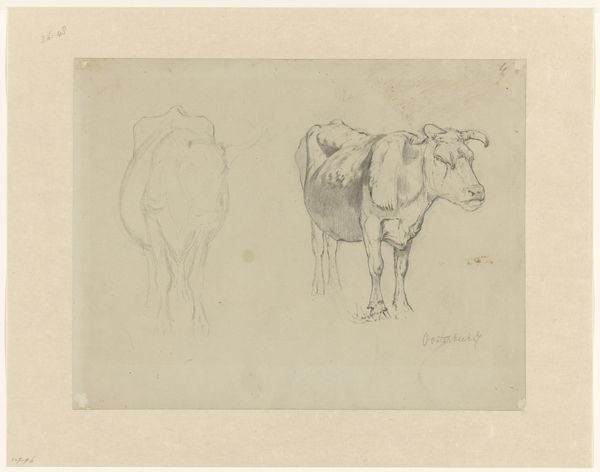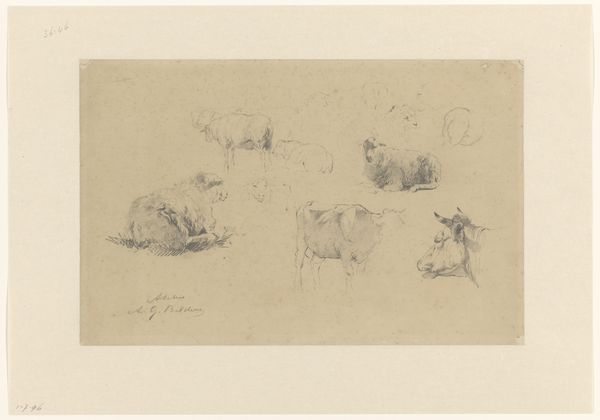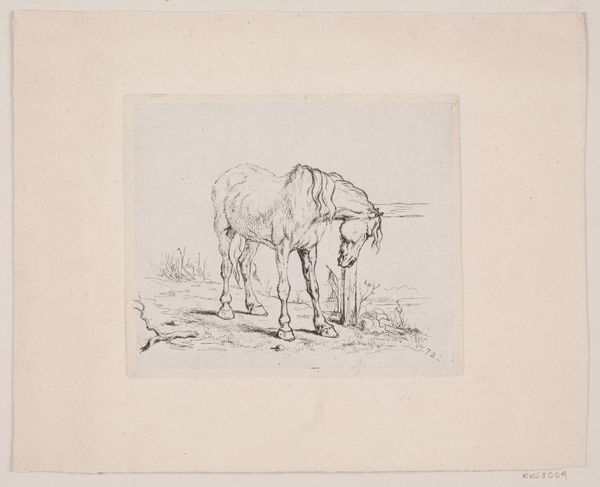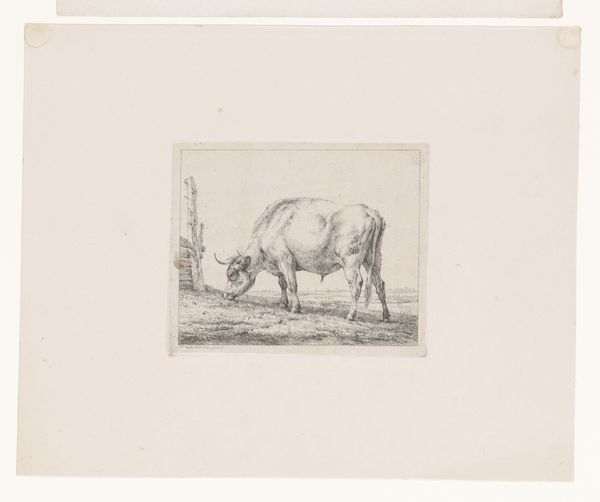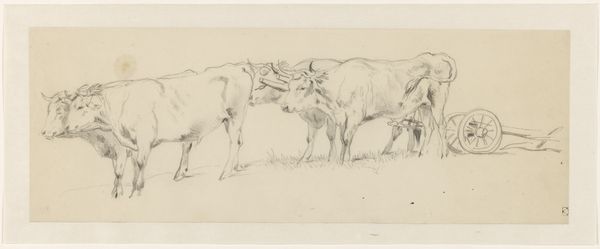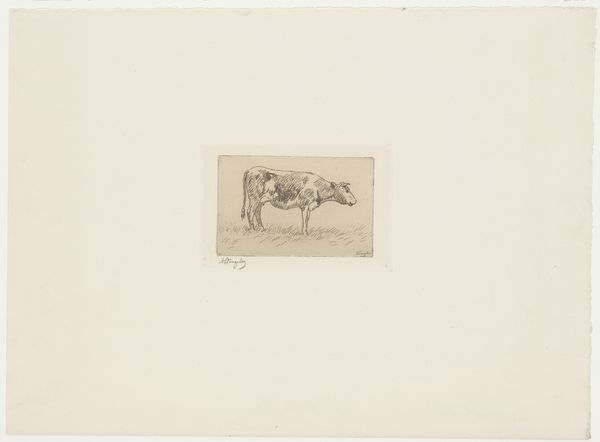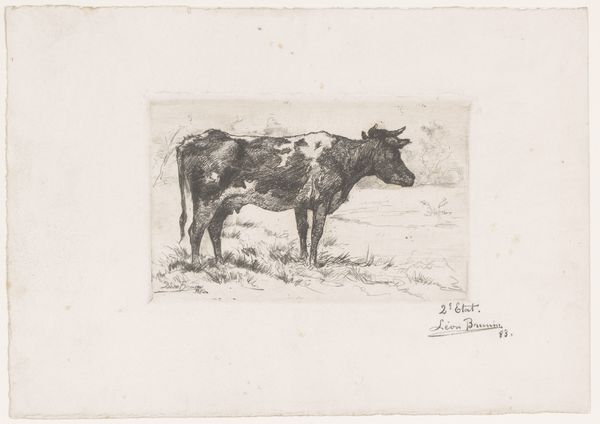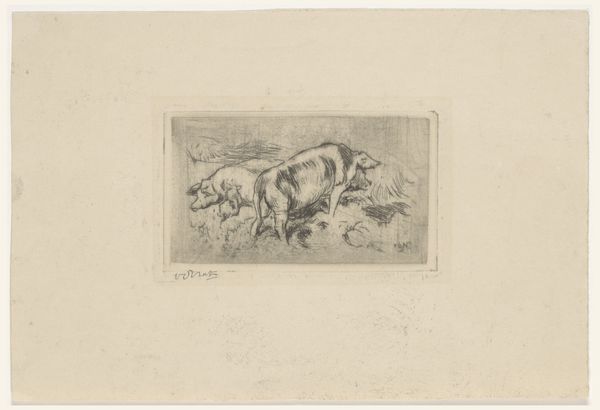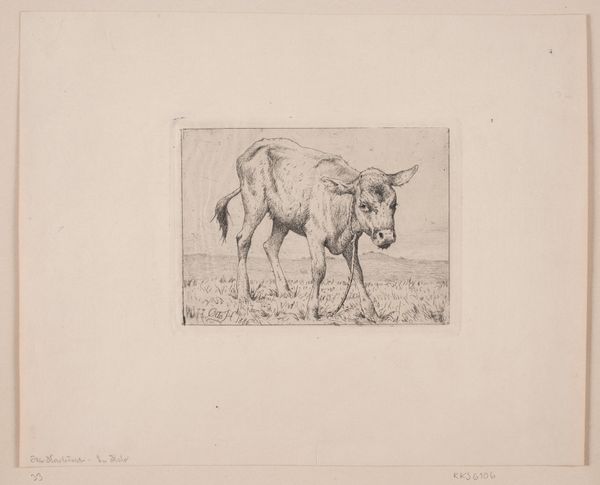
drawing, print, etching, paper, ink
#
drawing
# print
#
etching
#
landscape
#
etching
#
figuration
#
paper
#
ink
#
romanticism
#
line
#
realism
Dimensions: height 189 mm, width 230 mm
Copyright: Rijks Museum: Open Domain
Editor: We're looking at Eugène Verboeckhoven's "Cow by Tree with Jug Beside It", created in 1822 using etching. It's a surprisingly delicate scene—the fine lines almost give the impression of a soft, hazy day in the countryside. It feels quiet and serene. What do you make of it? Curator: Ah, yes. A tranquil moment caught in ink. It almost whispers of simpler times, doesn't it? Notice how the artist uses line work to create texture – you can practically feel the rough bark of the tree and the coarse hair of the cow. What strikes me most is the unexpected detail of the jug; a domestic touch amidst the natural scene. Do you think that detail might tell a story? Editor: That's a thought—like someone left it there while tending to the cow. It brings in an element of human interaction. So, the landscape serves as not just scenery but a place of work, in a way. Curator: Exactly! And that intersection is what breathes life into the Romantic era's pastoral visions. We’re not just gazing at pretty scenery; we are witnessing an everyday communion with nature. Verboeckhoven invites us to slow down, observe, and maybe even smell the freshly turned earth, to listen for the quiet harmony of living alongside our animal neighbors. Editor: I love how a simple etching can evoke so much. It definitely shifts how I view landscape art— it’s not just pretty pictures, it is capturing our world with all of its stories. Curator: Indeed. Sometimes, the most profound statements are delivered in the softest whispers.
Comments
No comments
Be the first to comment and join the conversation on the ultimate creative platform.
